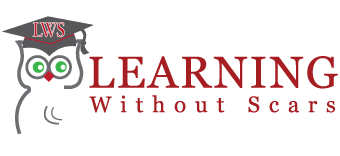Learning Without Scars provides comprehensive online learning programs for professionals starting with an individualized skills assessment. These assessments allow us to then create a personalized employee development program. From their assessed skills, the employee is asked to select from classes designed for their skill level, thus allowing them to address the gaps in their knowledge. Employees can move through four categories of progress: Developing, Beginning, Intermediate, and Advanced.
With the rapid changes and developments experienced in capital equipment over the past few decades we have reached the point where the skills and the knowledge of our technicians is the critical difference in developing and maintaining our relationships with our customers. This has included changes in machine design, computerization of componentry, telematics, and the use of exotic materials. Additionally, the technology within dealer management systems continues to progress at a rapid pace with VoIP, AI, and “smart” systems to name just a few.
The Rental Industry Technician comprehensive skills assessment covers the four major areas of equipment; Engine, Drive Train, Hydraulics and Electrical. In creating this assessment, we have into consideration the major manufacturers. The Rental Industry Technician assessment recognizes that it is not necessary for these technicians to be able to have the skills to repair and rebuild major componentry.
We have created thirty multiple-choice questions within each of the four categories above. The results from the CSA, Comprehensive Skills Assessment, categorize the skills and knowledge of the individual being assessed, into one of our four levels of accomplishment: Developing, Beginning, Intermediate, and Advanced.
These assessments can be used, in conjunction with background checks and interviews, to screen applicants before they are hired. They should also be used in the annual performance review with each employee. They can even be used as a foundation piece of information related to the wages and salaries paid to the employees. Finally, and this is the genesis of the creation of the comprehensive skills assessment, these assessments have been developed to be used to create a specific technical training program for each employee in the repair and maintenance business.
Learning Without Scars requires that all certification programs start with a Diagnostic Test that is accessible through our Learning Management System. This allows us to assess the employee’s basic skills and knowledge and determine where additional learning is needed in order for he or she to perform their job at optimal levels. Learning Without Scars can also then provide a learning path to guide them through the educational process.
The score on the Diagnostic Certification Test helps determine where the learning and testing process begins. For those that score on the low end, a prerequisite bundle of classes is highly recommended. These eight classes provide thorough knowledge of the fundamentals needed for success as the learner progresses through the three levels of professional certification: Basic, Advanced and Master.
Industry accepted certification programs provide documented credentials for industry professionals that enhance employee’s career progress, increase their value to their employers, and help employees better contribute to company success. For employers, certifications provide objective, measurable industry standards to assessing and improving employee performance. They also contribute to employee development, demonstrate employer commitment to employees, and improve recruitment and retentions programs. All the above help improve customer satisfaction, customer loyalty, and most importantly customer retention.
The First Level of Certification is “Basic.” This is an entry-level credential that demonstrates foundational knowledge or skills that expand upon those offered in the prerequisite classes. It’s designed for beginners or others that could benefit from a “refresher” curriculum, and serves as another stepping stone toward achieving more advanced qualifications. There are eight classes that one must successfully complete in order to take the Basic Certification Test which consists of one hundred and twenty questions.
The Second Level of Certification is “Advanced.” This credential indicates that the holder has specialized knowledge and expertise beyond the foundational level for their field. It proves a high level of achievement and a commitment to professional development, which can set an individual apart among those in their professional field of expertise. It also serves as another step toward achieving the top credential, Master Certification. There are eight classes that one must successfully complete in order to take the Advanced Certification Test which consists of one hundred and fifty questions.
